The old red-brick part of this building was originally a technical college which first opened in 1903 and has given its name to this Wetherspoon pub.
A print and text about The College Arms.

The text reads: The pub you are now in takes its name from its original use as a technical college. Such colleges were built following the Technical Education Act, 1889, authorising local authorities to aid or supply higher education at a cost limited to 1 penny in the £.
The County Technical College, Broadway, was built in 1903, providing both day-time and evening classes.
From 1926 it provided evening classes only. During the day it was used as an annexe by Deacon’s Grammar School until around 1950. It then became East Holm County School.
A few years later the building was acquired by the Council, and used as offices until its sale in 1990. The sale also included the neighbouring Public Library.
The former library was built at a cost of more than £6,000 donated by Andrew Carnegie, the famous Scottish American millionaire. Carnegie was also a Freeman of the City of Peterborough.
Prints and text about The College Arms.
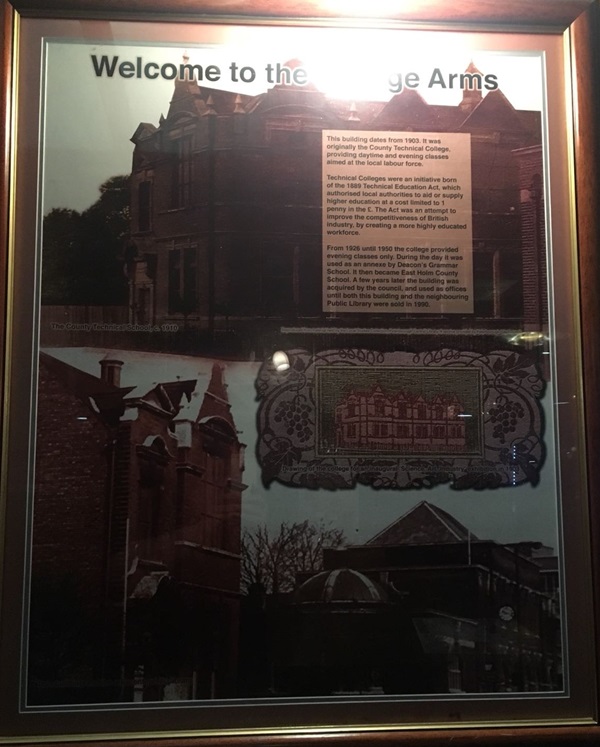
The text reads: This building dates from 1903. It was originally the County Technical College, providing daytime and evening classes aimed at the local labour force.
Technical Colleges were an initiative born of the 1889 Technical Education Act, which authorised local authorities to aid or supply higher education at a cost limited to 1 penny in the £. The Act was an attempt to improve the competitiveness of British industry, by creating a more highly educated workforce.
From 1926 until 1950 the college provided evening classes only. During the day it was used as an annexe by Deacon’s Grammar School. It then became East Holm County School. A few years later the building was acquired by the council, and used as offices until both this building and the neighbouring Public Library were sold in 1990.
Photographs and text about Edith Cavell.

The text reads: Edith Cavell is remembered today for an outstanding act of self-sacrifice. By saving others during the 1st World War she condemned herself to a certain death.
Her memorial in Peterborough Cathedral was erected “by teachers, pupils and friends of her old school”. Edith had been a pupil-teacher at Laurel Court, in the Cathedral precincts.
Born in 1865 in the picturesque village of Swardestone, near Norwich, she was the eldest of five children. It was not until she was aged 31 that Edith became a nurse.
In 1907 Edith Cavell left England to become the matron of a newly opened school for nurses in the Rue de la Culture in Brussels.
During the German occupation of that city she hid Belgian and French soldiers in her house, and provided them with money and guides with which to escape.
Edith was arrested, and at dawn on Tuesday 12 October 1915, she was executed by a German military firing squad.
She was buried in a shallow grave in the corner of the courtyard, close to where she had been shot.
Top: Edith Cavell
Above: This propaganda postcard was an instant best-seller.
Prints of historical female figures from Peterborough.

Top: Catherine of Aragon, buried in Peterborough Cathedral
Centre: Mary Queen of Scots, executed at Fotheringay and buried in Peterborough Cathedral
Above: Lady Mary Wortley Montagu, celebrated letter writer, and wife of Peterborough’s MP.
A print and text about John Clare.

The text reads: Initially well regarded, the poetry of John Clare remained virtually unread until rediscovered in the early part of the 20th century. Today he is a poet with an international reputation, honoured with a plaque in Poets’ Corner, Westminster Abbey.
Born in 1793, in the village of Helpston on the outskirts of Peterborough, Clare was the son of an agricultural labourer and an illiterate mother. At an early age, the future poet was put to work in the fields.
During his youth the land around Helpston and several neighbouring villages was enclosed, creating a new landscape. His Poems Descriptive of a Rural Life, (1820) and The Village Minstrel (1821) both describe the conditions of the rural poor and evoke the old village landscape of open fields.
His poetry was favourably reviewed, and admired by the likes of Keats and Coleridge. Two subsequent collections, his Shepherd’s Calendar and Rural Muse, were comparatively unsuccessful.
By then he had married Martha Turner, although he was haunted by an earlier relationship with Mary Joyce. Having moved to nearby Northborough, his poems began to show the melancholy that was later to engulf him.
In 1837 he became mentally ill and was admitted to an asylum in High Beach, Epping. He escaped in 1841 and walked to Northamptonshire, having convinced himself that he would be reunited with Mary Joyce, to whom he believed he was married. Clare was committed to the county asylum in Northampton, where he remained for 20 years, until his death in 1864.
Illustrations and text about Hereward the Wake.
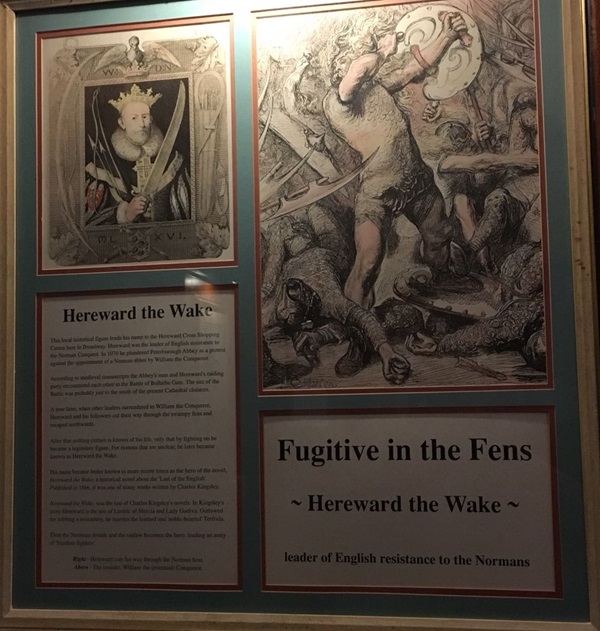
The text reads: This local historical figure lends his name to the Hereward Cross Shopping Centre here in Broadway. Hereward was the leader of English resistance to the Norman Conquest. In 1070 he plundered Peterborough Abbey as a protest against the appointment of a Norman abbot by William the Conqueror.
According to medieval manuscripts the Abbey’s men and Hereward’s raiding party encountered each other in the Battle of Bolhithe Gate. The site of the battle was probably just to the south of the present cathedral cloisters.
A year later, when other leaders surrendered to William the Conqueror, Hereward and his followers cut their way through the swampy fens and escaped northwards.
After that nothing certain is known of his life, only that by fighting on he became a legendary figure. For reasons that are unclear, he later became known as Hereward the Wake.
His name became better known in more recent times as the hero of the novel, Hereward the Wake, a historical novel about the Last of the English. Published in 1866, it was one of many works written by Charles Kingsley.
Hereward the Wake, was the last of Charles Kingsley’s novels. In Kingsley’s story Hereward is the son of Leofric of Mercia and Lady Godiva. Outlawed for robbing a monastery, he marries the learned and ‘nobble-hearted’ Torfrida.
Then the Normans invade and the outlaw becomes the hero, leading an army of ‘freedom fighters’.
Right: Hereward cuts his way through the Norman host
Above: The invader, William the (eventual) Conqueror.
Prints and text about Daniel Defoe and Charles Kingsley.
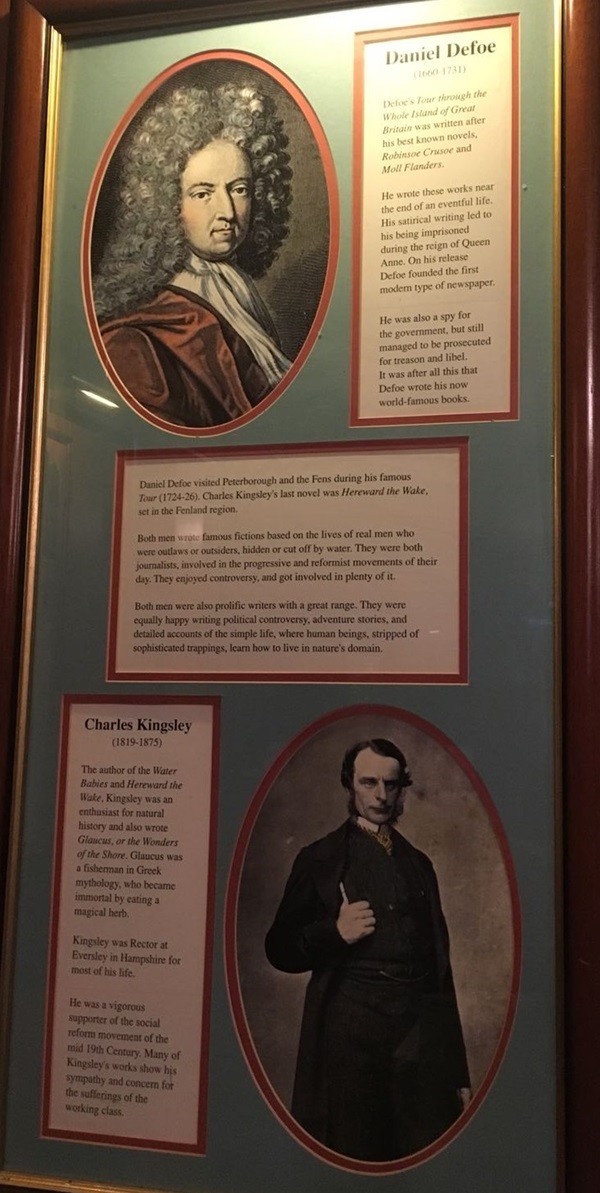
The text reads: Daniel Defoe
Defoe’s Tour Through the Whole Island of Great Britain was written after his best known novels, Robinson Crusoe and Moll Flanders.
He wrote these works near the end of an eventful life. His satirical writing led to his being imprisoned during the reign of Queen Anne. On his release Defoe founded the first modern type of newspaper.
He was also a spy for the government, but still managed to be prosecuted for treason and libel. It was after all this that Defoe wrote his now world-famous books.
Daniel Defoe visited Peterborough and the Fens during his famous Tour (1724-26). Charles Kingsley’s last novel was Hereward the Wake, set in the Fenland region.
Both men wrote famous fictions based on the lives of real mean who were outlaws or outsiders, hidden or cut off by water. They were both journalists, involved in the progressive and reformist movements of their day. They enjoyed controversy, and got involved in plenty of it.
Both men were also prolific writers with a great range. They were equally happy writing political controversy, adventure stories, and detailed accounts of the simple life, where humans beings, stripped of sophisticated trappings, learn how to live in nature’s domain.
Charles Kingsley
The author of the Water Babies and Hereward the Wake, Kingsley was an enthusiast for natural history and also wrote Glaucus, or the Wonders of the Shore. Glaucus was a fisherman in Greek mythology, who became immortal by eating a magical herb.
Kingsley was rector at Eversley in Hampshire for most of his life.
He was a vigorous supporter of the social reform movement of the mid 19th century. Many of Kingsley’s works show his sympathy and concern for the sufferings of the working class.
Prints and text about Daphne du Maurier.
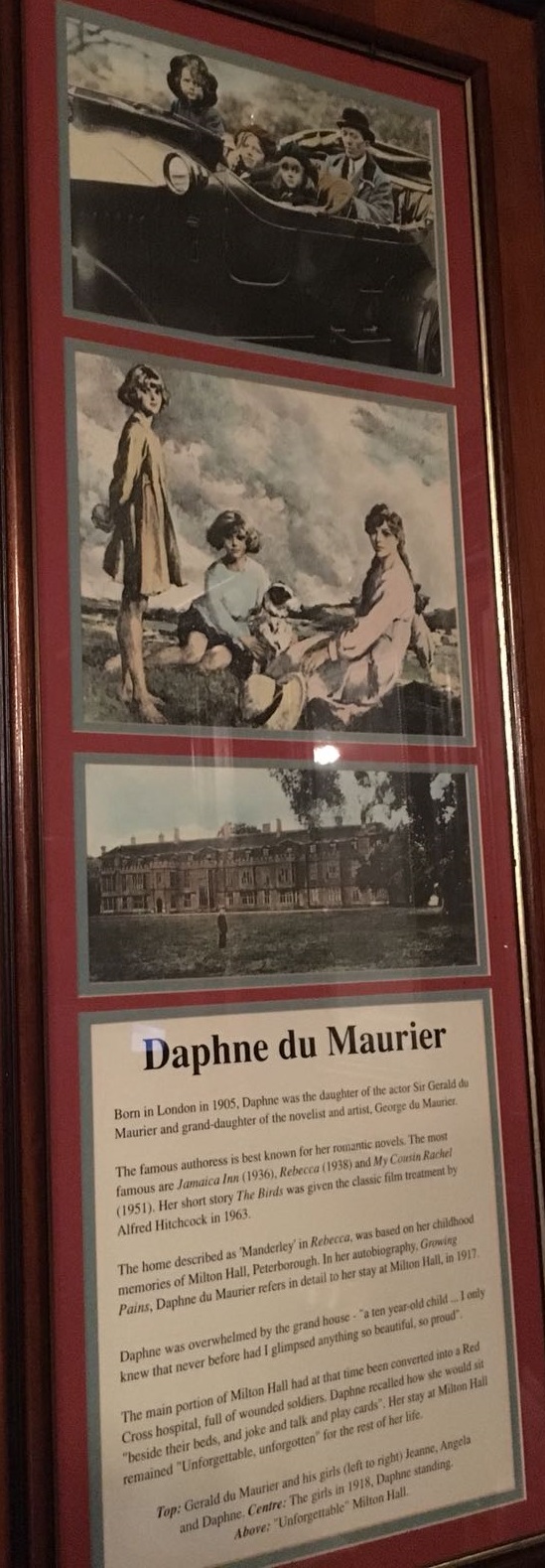
The text reads: Born in London in 1905, Daphne was the daughter of the actor Sir Gerald du Maurier and grand-daughter of the novelist and artist, George du Maurier.
The famous authoress is best known for her romantic novels. The most famous are Jamaica Inn (1936), Rebecca (1938) and My Cousin Rachel (1951). Her short story The Birds was given the classic film treatment by Alfred Hitchcock in 1963.
The home described as ‘Manderley’ in Rebecca, was based on her childhood memories of Milton Hall, Peterborough. In her autobiography, Growing Pains, Daphne du Maurier refers in detail to her stay at Milton Hall, in 1917.
Daphne was overwhelmed by the grand house – “a ten year-old child … I only knew that never before had I glimpsed anything so beautiful, so proud”.
The main portion of Milton Hall had at that time been converted into a Red Cross hospital, full of wounded soldiers. Daphne recalled how she would sit “beside their beds, and joke and talk and play cards”. Her stay at Milton Hall remained “Unforgettable, unforgotten” for the rest of her life.
Top: Gerald du Maurier and his girls (left to right) Jeanne, Angela and Daphne
Centre: The girls in 1918, Daphne standing
Above: “Unforgettable” Milton Hall.
A print and text about Lady Mary Wortley Montagu.
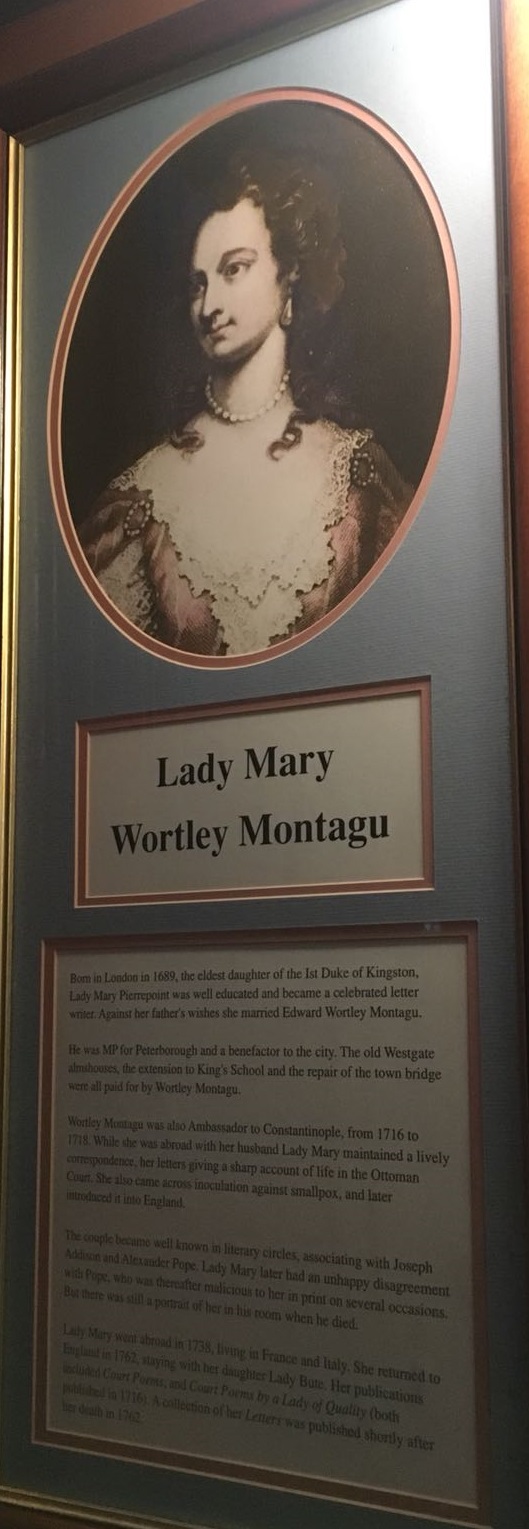
The text reads: Born in London in 1689, the eldest daughter of the 1st Duke of Kingston, Lady Mary Pierrepoint was well educated and became a celebrated letter writer. Against her father’s wishes she marries Edward Wortley Montagu.
He was MP for Peterborough and a benefactor to the city. The old Westgate almshouses, the extension to King’s School and the repair of the town bridge were all paid for by Wortley Montagu.
Wortley Montagu was also Ambassador to Constantinople, from 1716 to 1718. While she was abroad with her husband Lady Mary maintained a lively correspondence, her letters giving a sharp account of life in the Ottoman Court. She also came across inoculation against smallpox, and later introduced it into England.
The couple became well known in literary circles, associating with Joseph Addison and Alexander Pope. Lady Mary later had an unhappy disagreement with Pope, who was thereafter malicious to her in print on several occasions. But there was still a portrait of her in his room when he died.
Lady Mary went abroad in 1738, living in France and Italy. She returned to England in 1762, staying with her daughter Lady Bute. Her publications included Court Poems, and Court Poems by a Lady of Quality (both published in 1716). A collection of her Letters was published shortly after her death in 1762.
A photograph of Town Hall and Cowgate, Peterborough, c1914.
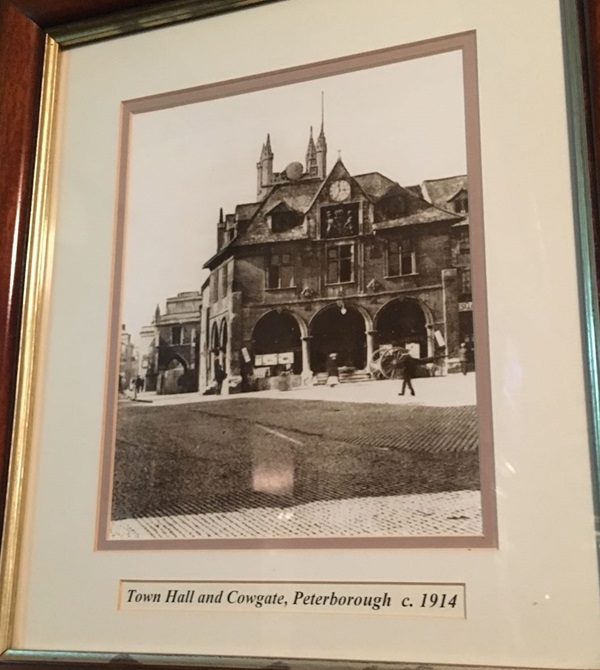
A photograph of Westgate and Midgate, Peterborough, c1908.
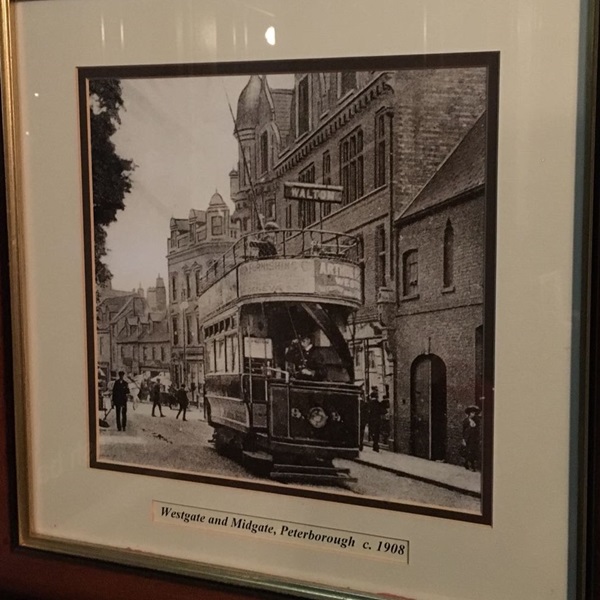
A photograph of car number 11, Peterborough, c1914.
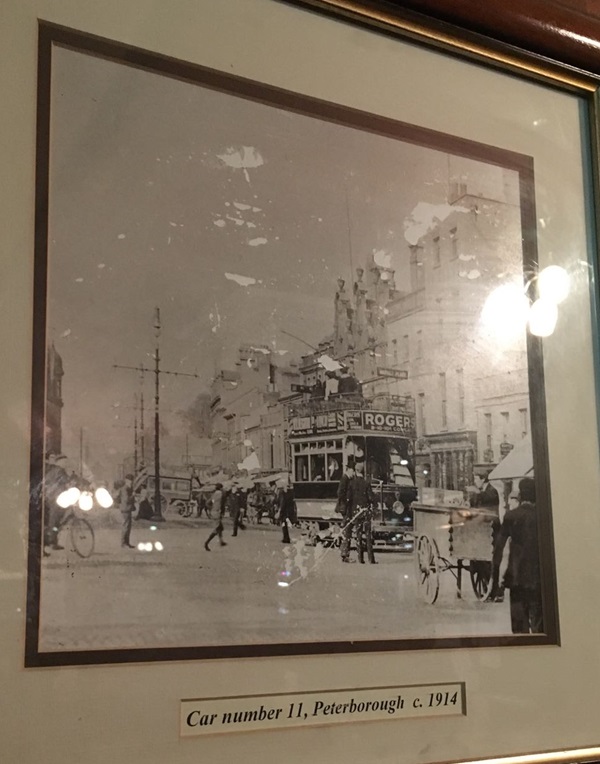
A photograph of Market Place, Peterborough, c1912.
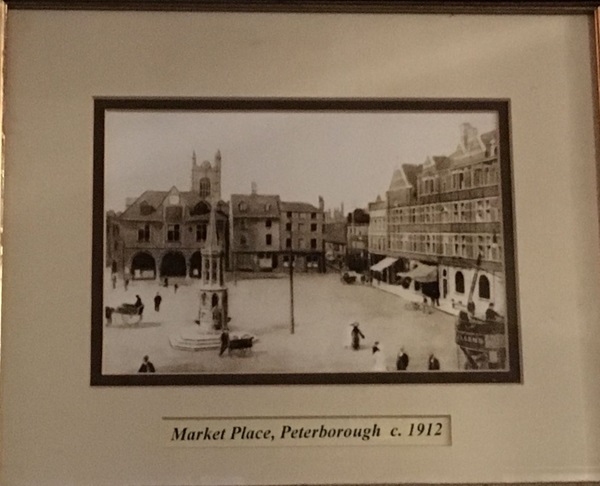
A photograph of Longthrope, Peterborough, c1908.
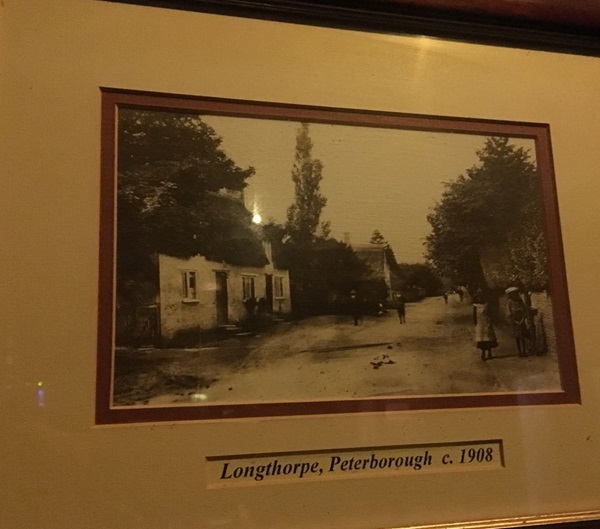
A photograph of Cowgate, Peterborough, c1914.
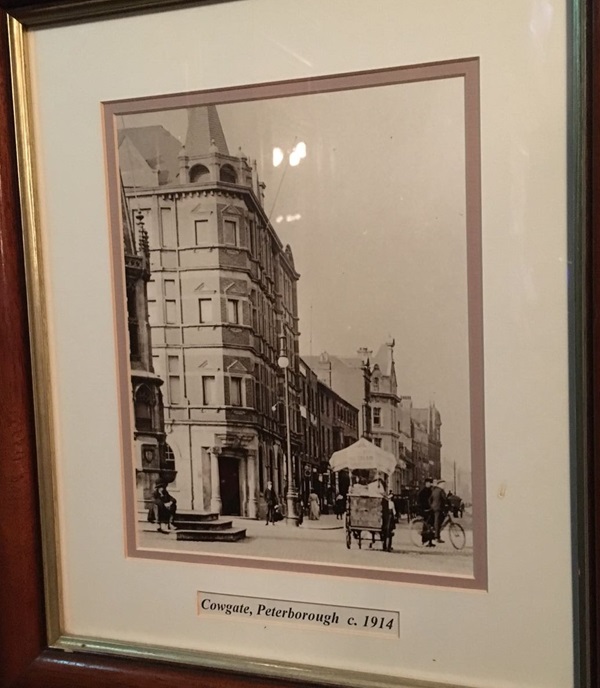
A photograph of Thorpe Road, Peterborough, c1905.
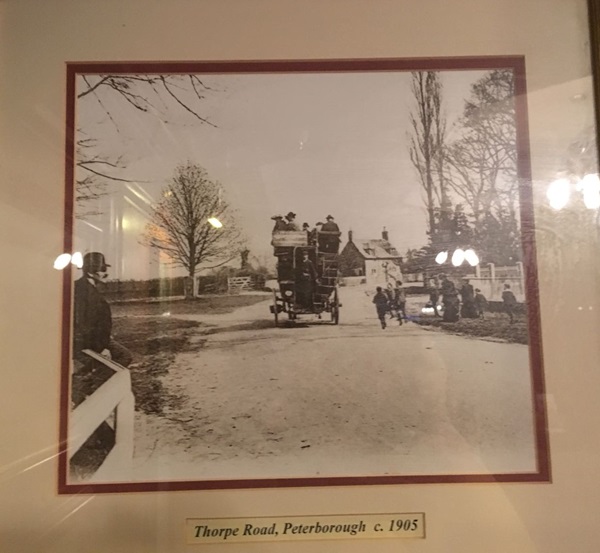
A photograph of Town Hall and St John’s Church, Peterborough, c1909.
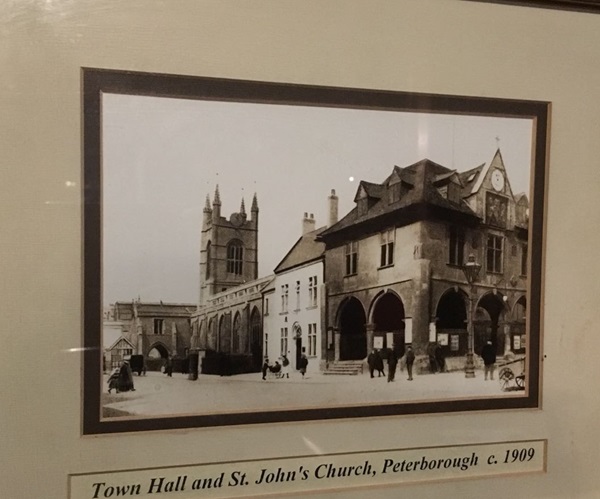
A photograph of Broad Bridge Street, Peterborough, c1930.
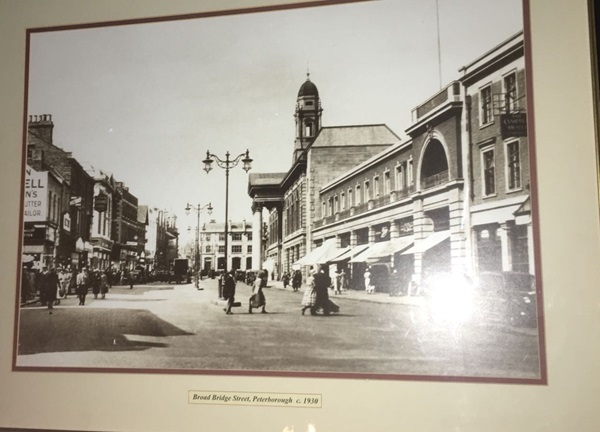
A photograph of Millfield, Peterborough, c1909.
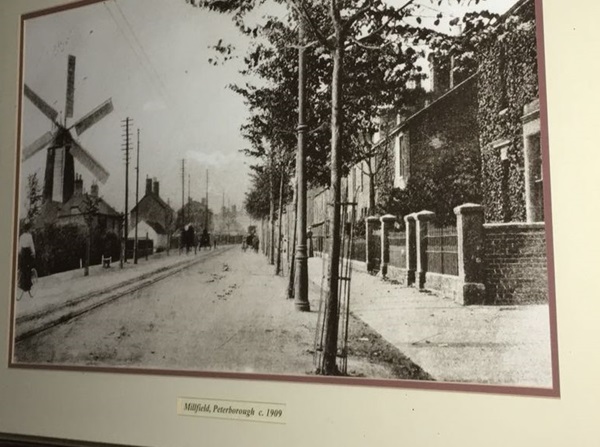
A photograph of Station Road, Peterborough, c1906.
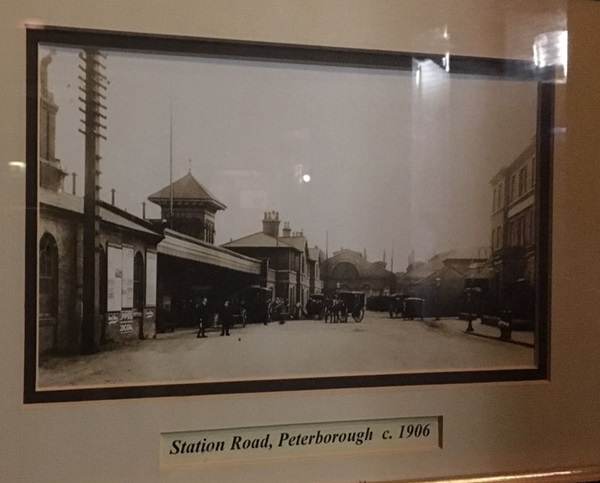
A photograph of Long Causeway, Peterborough, c1904.
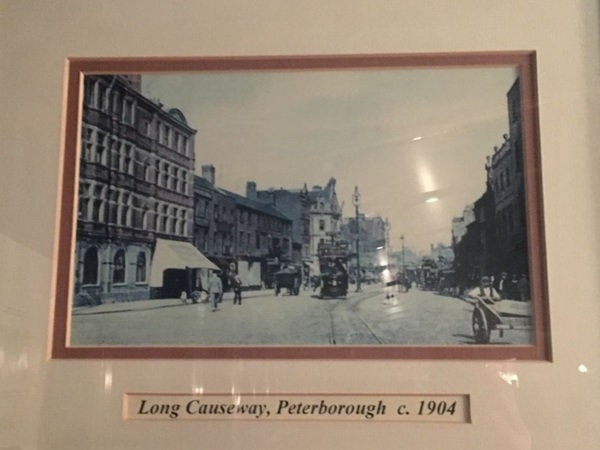
External photograph of the building – main entrance.
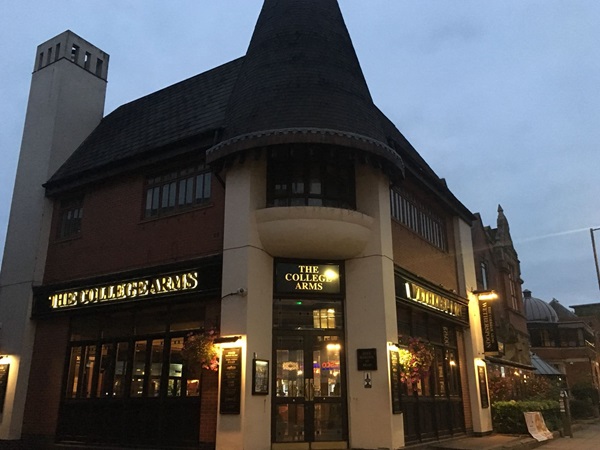
If you have information on the history of this pub, then we’d like you to share it with us. Please e-mail all information to: pubhistories@jdwetherspoon.co.uk